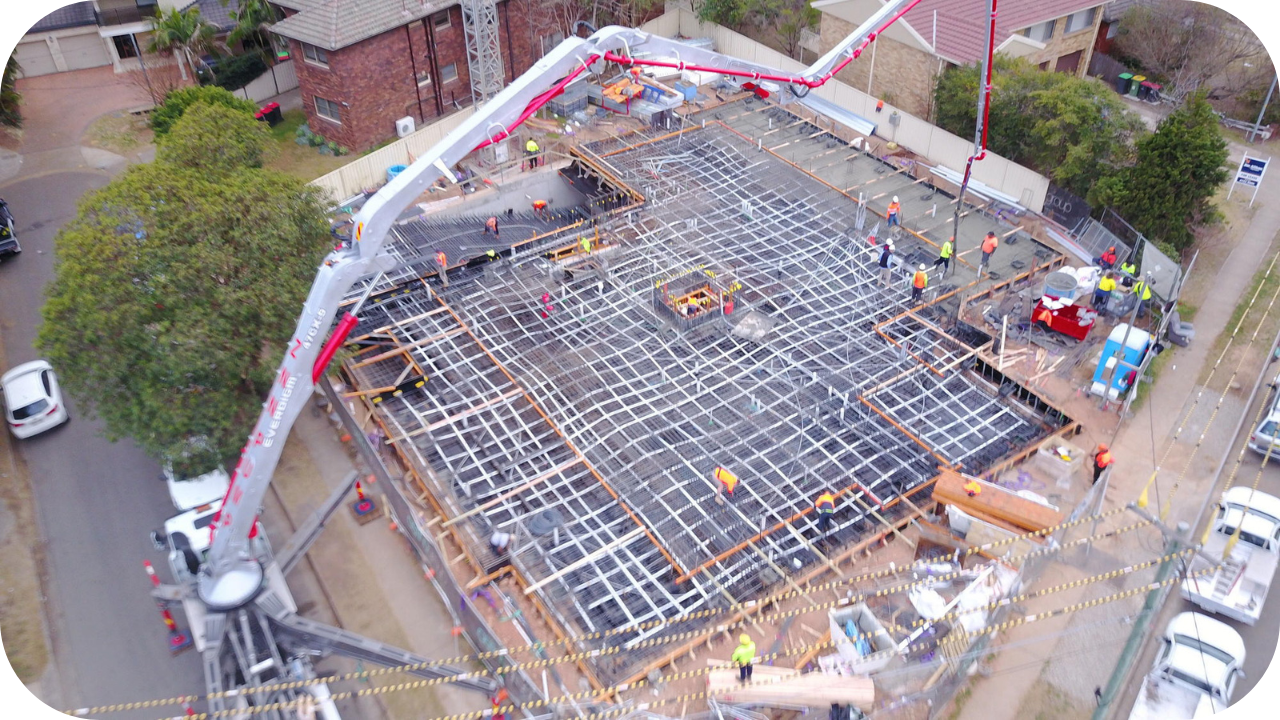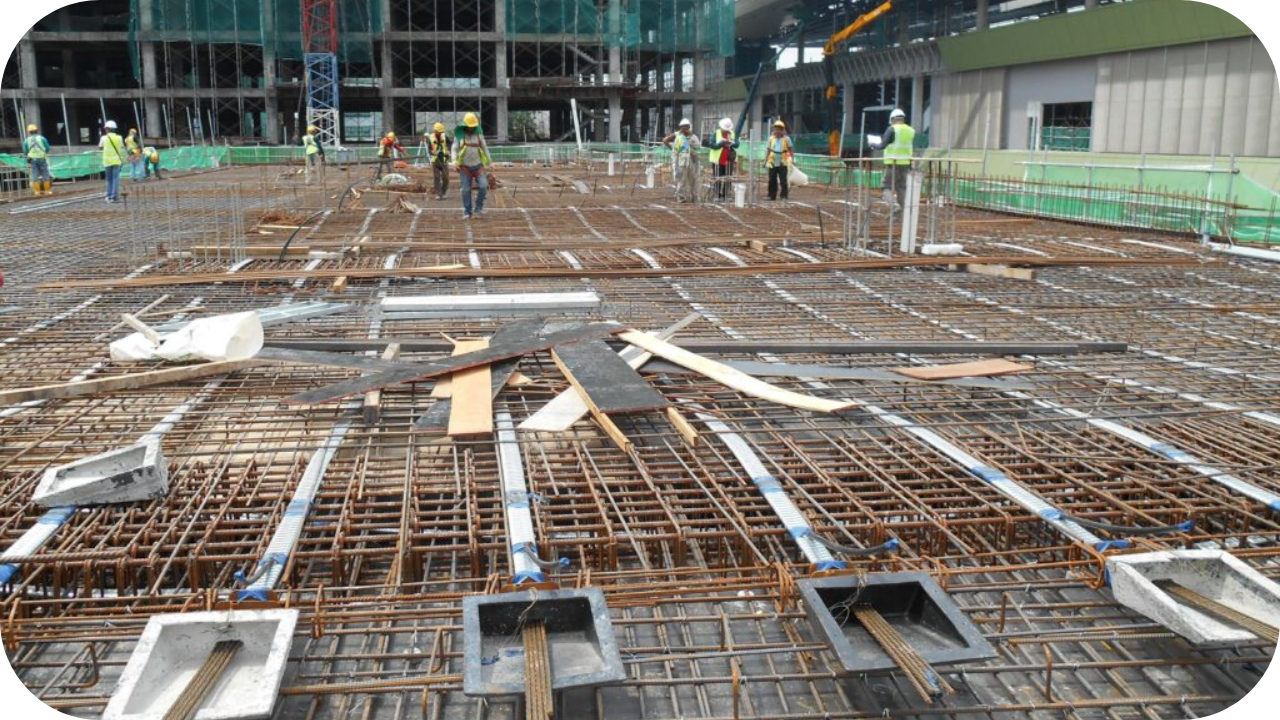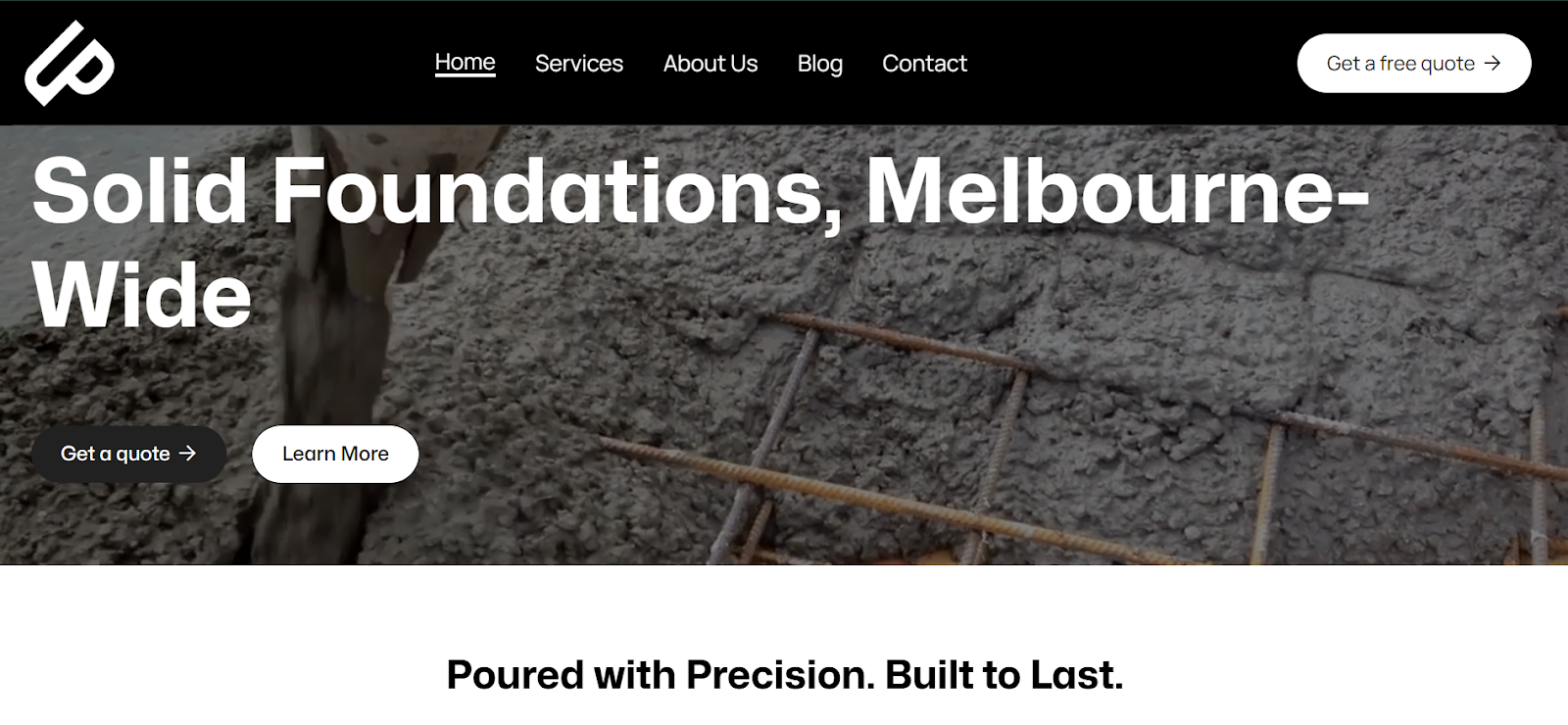


Post-tensioned slabs are a modern engineering solution designed to improve concrete performance, especially in large-scale Melbourne construction projects.
By using high-strength steel tendons to compress the concrete after it has hardened, these slabs gain extra durability, reduced cracking, and the ability to span longer distances without extra supports.
They’re widely used in commercial, residential, and infrastructure builds. For developers and homeowners in Melbourne, understanding how these slabs work can help in making informed, cost-effective construction decisions.
A post-tensioned slab is a type of reinforced concrete slab that uses high-strength steel tendons placed within ducts before pouring. Once the concrete cures, these tendons are tensioned and anchored, placing the slab in compression. This process significantly improves load-bearing capacity and minimises cracking over time.
Unlike conventional reinforced concrete, where steel reinforcement is passive, post-tensioning actively strengthens the structure after the concrete has set. This allows for longer spans, thinner slabs, and reduced reliance on intermediate supports.
In Melbourne’s construction industry, this method is especially valued for projects requiring structural efficiency and cost-effective design.

From the first site markings to the final tensioning, every stage of building a post-tensioned slab demands precision. Here’s how the process unfolds step by step:
The process begins with careful site preparation to create a stable foundation for the slab. Surveyors mark out the slab footprint, ensuring accurate levels and the correct position of all tendons and anchor points.
The subgrade is compacted to meet engineering specifications, and a blinding layer or sand bed is placed where required. This initial stage is critical, as even small errors in alignment or elevation can lead to issues later in construction.
By ensuring the ground is properly prepared and the layout is precise, contractors set the stage for a structurally sound post-tensioned slab.
Once the site is prepared, formwork is installed to shape the slab and provide support during pouring. Edge beams are constructed along the slab’s perimeter, and pour strips or block-outs are positioned according to the engineering drawings.
The formwork must be accurately aligned, levelled, and braced to withstand the pressure of the wet concrete. Careful attention is paid to tolerances and cover requirements to ensure compliance with design specifications.
This stage also includes preparing any required recesses or openings. Quality formwork ensures the finished slab meets dimensional accuracy, which is essential for effective post-tensioning and long-term performance.

A vapour barrier, typically heavy-duty polyethylene, is laid across the prepared base to protect the slab from moisture rising through the soil. Overlaps are sealed with tape to maintain integrity.
Chairs and spacers are positioned to support reinforcement and post-tension tendons, keeping them at the correct height for adequate concrete cover. This prevents steel from being too close to the surface, where it could be vulnerable to corrosion.
The correct placement of these elements ensures both structural strength and long-term durability. These details may seem minor, but are vital in achieving a high-quality slab that performs reliably over time.
Steel tendons or strands are positioned according to the engineer’s design, often following a draped profile to maximise structural efficiency. Each tendon is sheathed or placed inside ducts, protecting it from direct contact with concrete and allowing movement during stressing.
Anchorages are installed at slab edges or designed points to secure the tendons. The layout must be precisely followed, as any deviation can affect the slab’s load distribution.
Tendons are tied or fixed to prevent movement during the pour, ensuring they remain in the correct position. This step directly impacts the effectiveness of the post-tensioning process once completed.
In addition to tendons, conventional steel reinforcement is installed to handle localised stresses and support the slab’s integrity. This includes mesh, trimming steel around openings, and anti-burst reinforcement near anchor zones.
At the same stage, services such as conduits, sleeves, and plumbing penetrations are installed, ensuring they do not interfere with tendon paths. Coordination between trades is crucial to avoid clashes during stressful situations.
By finalising reinforcement and service placements before the pour, the slab can be poured without delays or costly rework. Attention to detail here ensures structural strength and accommodates future building services without compromising safety.
Concrete is poured continuously to avoid cold joints, ensuring a uniform slab. The mix is placed carefully around tendons and reinforcement, then compacted with vibrators to remove air pockets.
The surface is levelled and finished according to the project’s requirements. Immediately after pouring, curing begins to prevent rapid moisture loss, which could lead to cracking. Methods include applying curing compounds, using wet coverings, or maintaining moisture with sprinklers.
Proper curing is vital in achieving the concrete’s designed strength before stressing the tendons. At this stage, the slab begins to take shape, setting the foundation for the post-tensioning process.
When the concrete reaches the specified strength, tendons are stressed using hydraulic jacks to the engineer’s target force. This places the slab in compression, increasing its load capacity and reducing the risk of cracking.
For bonded systems, ducts are then filled with specialised grout to protect the steel and enhance durability. Anchor pockets are patched, strand tails are trimmed, and the slab undergoes a final curing period.
Documentation such as stressing charts and as-built layouts is completed. The slab is then marked as post-tensioned, ensuring future trades are aware that cutting or drilling requires proper scanning and approval.

In Melbourne’s fast-paced construction market, post-tensioned slabs offer more than just structural strength, they deliver design freedom, durability, and efficiency that traditional concrete simply can’t match:

While post-tensioned slabs offer impressive benefits, they also come with technical demands and potential challenges that must be addressed from design to installation:
Designing post-tensioned slabs for Melbourne builds isn’t just about engineering strength, it’s about meeting strict standards while maximising value over the project’s lifetime:

When it comes to post-tensioned slabs, the right contractor makes all the difference, and Urban Pour delivers precision, compliance, and reliability every time:
If you’re planning a residential, commercial, or multi-storey project, Urban Pour can deliver expertly engineered post-tensioned slabs that meet Melbourne’s toughest standards. Our team handles every stage with precision, from design to stressing. Contact us today for a tailored quote and start building with proven strength and efficiency.

Choosing the right concrete contractor in Melbourne ensures strength, safety, and long-term value. Learn how Urban Pour delivers precision, quality, and trusted results on every project.
See more
Concrete pumping gives Melbourne builders faster, cleaner, and safer pours. Learn why it’s the go-to method for efficient, high-quality concrete placement on any site.
See more
Residential concreting gives Melbourne homes lasting strength and modern appeal. From driveways to interiors, Urban Pour delivers durable, design-focused results built for beauty and longevity.
See more